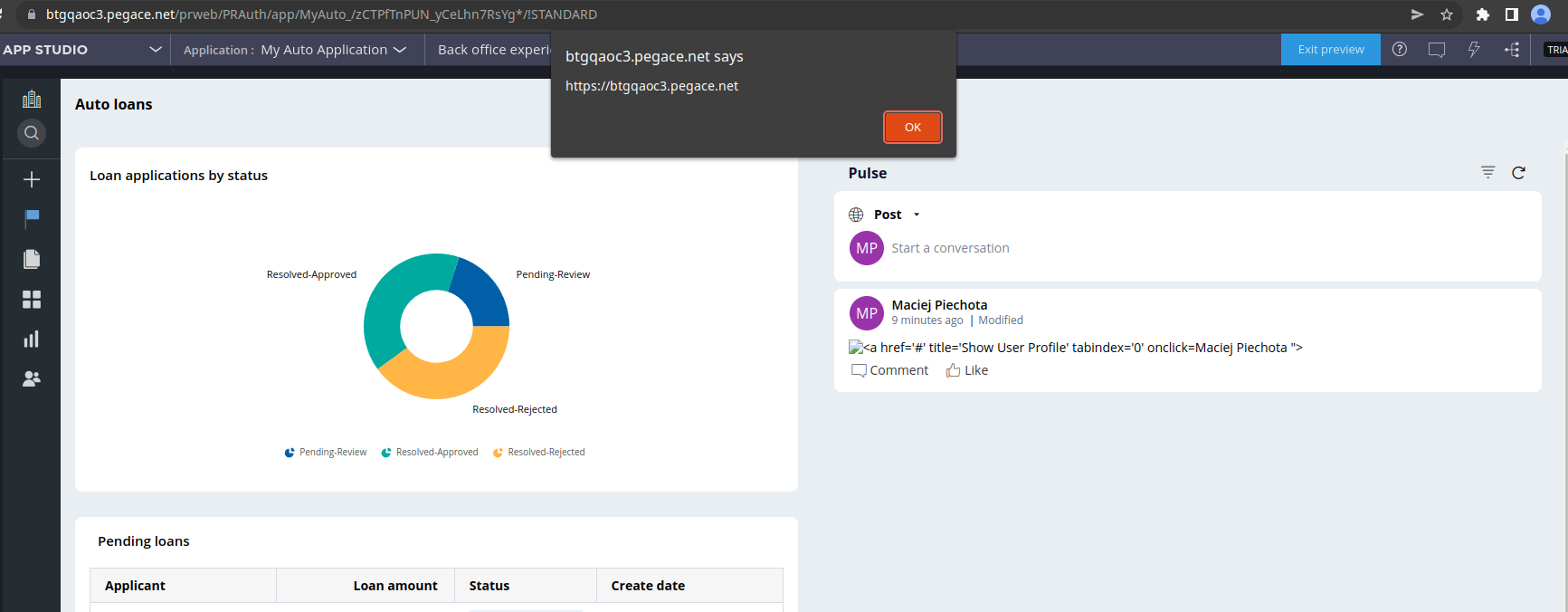Breaking Through Xss Filters In Pega Platform
2 minutes to read
CVE-2023-26465 - Breaking Through XSS Filters with Markdown-nesting and User Mentioning in Pega Platform
Last year we identified an interesting XSS vulnerability involving clever use of markdown syntaxt and user mentioning in Pega Systems Platform. This post delves into details of the PoC, providing a concise yet thorough analysis of how arbitrary JavaScript code could be executed within the application.
Intro
Pega Platform is a complex CRM solution designed to automate business processes and improve customer engagement. It includes many sub-modules, one of which is the Pega Pulse, facilitating direct communication and collaboration within the platform.
Pega Pulse allows for use of markdown syntax as well as mention other users in the company, we exploited those two functionalities to construct the below PoC.
PoC
>](1)
PoC Deconstruction
In the beginning, we noticed that it is possible to escape from quotes in anchor tags using user-mentioning functionality:
<a href="https://secforce.com@maciej.piechota@secforce.com ">link</a>
please notice that part of the mention became the HTML attribute of the anchor tag.
We tried to construct a payload using any controlled part of HTML produced by mention but without results.
Then we focused on other functionalities and quickly noticed that limited markdown syntax is usable, among other images and links:

produces:
with controlled alternative text attribute, so we thought we could construct a payload there and then escape quotes using the previous method.
Unfortunately, HTML tags were stripped from the alt attribute, however, we did the same trick with nesting to bypass the XSS filter:
>](1)
what allowed us to construct an XSS payload inside the alt attribute.
Utilizing the earlier method of escaping from an attribute resulted in a stored cross-site scripting vulnerability.
>](1)
Affected versions
Pega Platform <= 8.7.1
Timeline
• 08.04.2022 – reported XSS to Pega Security team • 31.05.2022 – team sent acknowledgement • 24.02.2023 – CVE-2023-26465 assigned • 30.05.2023 – Pega Security Advisory released
References
https://support.pega.com/support-doc/pega-security-advisory-a23-vulnerability-remediation-note https://cve.mitre.org/cgi-bin/cvename.cgi?name=CVE-2023-26465
Outro
I would like to thank Pega security team for a smooth colaboration during responsible disclosure of this vulnerability.
Posted by on




